Find out what an underwater volcano eruption may look like through this fun, hands-on experiment! It’s a really cool science activity for kids to discover what happens when you mix warm and cold water while learning about volcanoes at the same time.
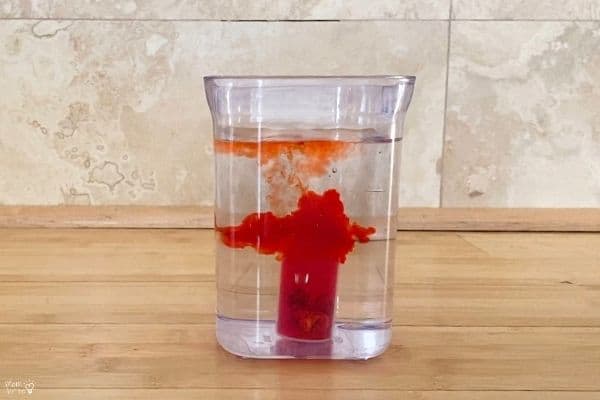
The paper mache volcano is a classic science experiment your kid might be at school. We made our own variations and erupted the LEGO volcano and apple volcano. But volcanos don’t just exist above sea level.
With this underwater volcano experiment, we explore what it may look like when volcanos erupt undersea. To do so, we use the concept of “warm air rises, cold air sinks” that we learned in the tornado formation experiment.
Underwater Volcano Eruption Experiment
Materials:
- Large clear container
- Small clear container (must fit inside the large one!)
- A heavy object that will weigh down the smaller container (we used small rocks)
- Water
- Red food coloring
Instructions:
1. Fill the large container with cold water.
2. Carefully place the rock(s) in the small container.
3. Add a couple of drops of food coloring in the small container.
4. Fill the small container with hot water. Since the water is hot, the food coloring should spread out and mix without you stirring. But if you are finding the food coloring not mixing in the hot water, feel free to stir with a chopstick.
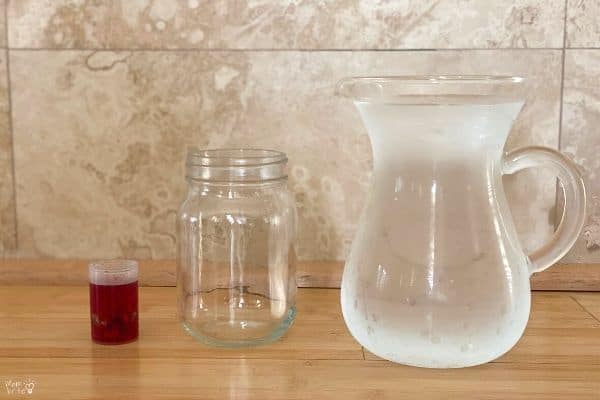
5. While keeping the container upright, gently release the small container in the large container. Tip: We actually practiced this a few times with just room temperature water before attempting this experiment.
6. Watch the colored water erupt from the small container like a volcano!
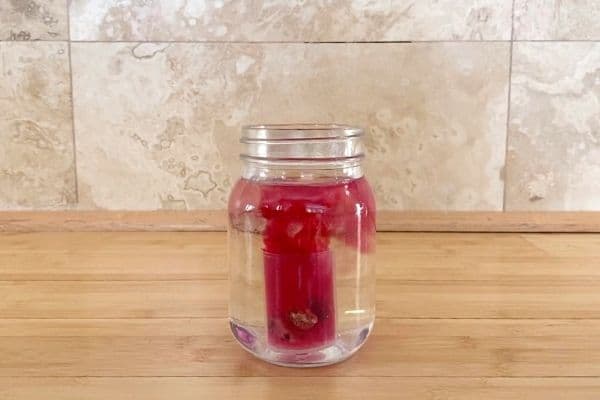
A taller container would have made the volcano eruption more dramatic, but the mason jar was the tallest container we had in the house. So if you have a tall container in the house, go for it!
The Science Behind the Underwater Volcano
Just as we learned in the “Warm Air Rises and Cold Air Sinks” experiment, hot water is less dense than cold water. As a result, the warmer water rises to the top, and the cold water sinks to the bottom.
When the water is hot, the water molecules are excited and move around faster. When they bump into each other, they bounce further away. Just think of a game of pool and the break makes all the balls bounce around the pool table all over the place as they bump into each other. As the molecules spread out and increase the space between them, the density decreases.
When you drop the small container of hot water into cold water, the hot water rises above the cold water. Since we had placed a rock to weigh down the small container, the hot water shoots up and looks like a volcano erupting.
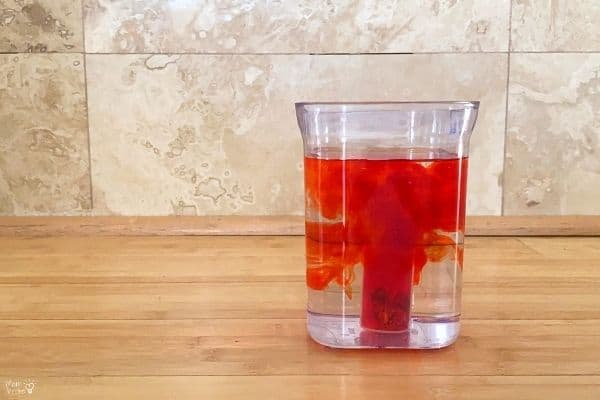
The kids had so much fun watching the undersea volcano erupt and all the “lava” flow out into the cold water. In case you never seen a real-life undersea volcano eruption before, here is a cool video to go with this experiment:
There are so many fun experiments based on this concept of hot and cold air/water. Make sure you check out:
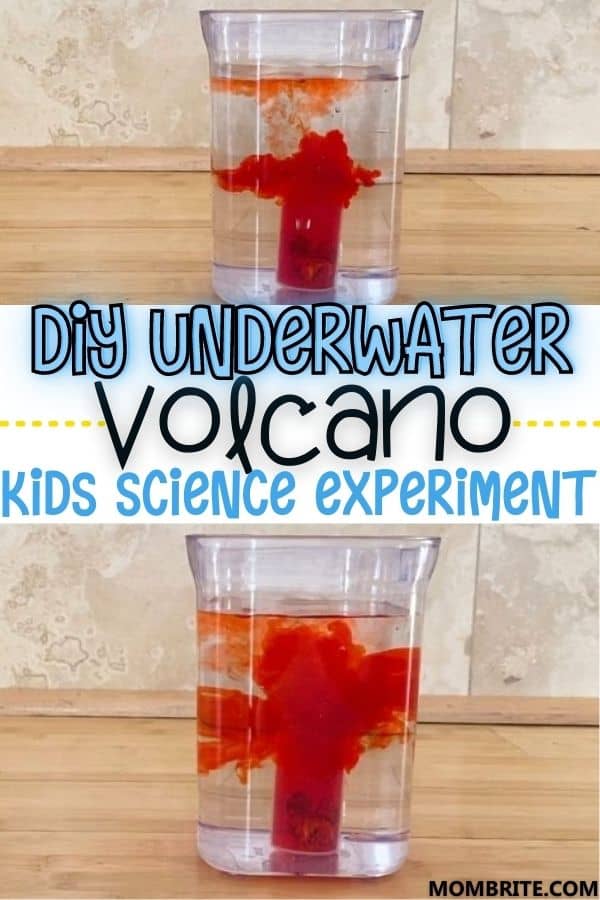

Thanks for this simple, easy volcano experiment that is unlike any other volcano experiment I’ve seen. Less supplies needed & still super cool!
Very much useful & educative. Thanks.
Very simple way to demonstrate volcano! Thanks for sharing.